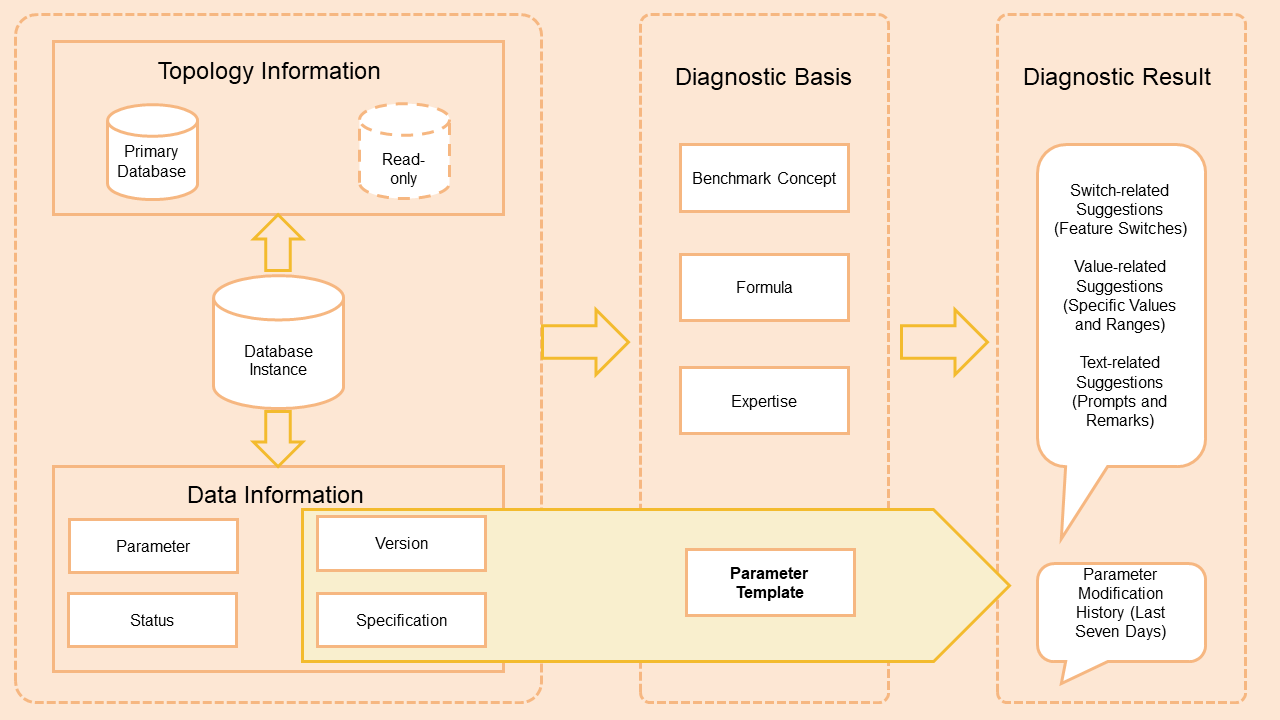Parameter tuning is an efficient method to improve the performance of your ApsaraDB RDS for MySQL database instances. Database Autonomy Service (DAS) provides the parameter diagnostics feature that allows you to diagnose the modifiable parameters of your instance in the ApsaraDB RDS console and view the parameter optimization solutions and parameter modification records within the previous seven days. This topic describes how to use the parameter diagnostics feature.
Background information
Database performance optimization is one of the most important researches in industry and academia. In addition to SQL optimization such as index optimization and business code optimization, parameter tuning also proves to be effective to optimize database performance.
Prerequisites
The version of the ApsaraDB RDS for MySQL database instance that you want to manage is 5.6, 5.7, or 8.0.
Limits
Only one parameter diagnostics and analysis task can be triggered within three minutes.
You can use the parameter diagnostics feature only to analyze the parameters that can be modified in the ApsaraDB RDS console and view the diagnosis. You are not allowed to directly modify these parameters in the DAS console.
If the interval between two consecutive parameter diagnostics and analysis tasks is short, the returned results may be the same.
How it works

Obtains the topology information of the database instance, and analyzes the primary instance and read-only instances.
Analyzes the parameter settings of the database instance based on the status of the instance, parameter templates, benchmark concepts related to additional parameters, calculation formulas, and expertise.
Provides diagnostics and analysis results. The results contain the static parameter diagnosis of the database instance and the parameter modification records within the previous seven days.
Usage notes
When you modify parameters in the ApsaraDB RDS console based on the diagnosis, you may need to restart the database instance to apply the modification. We recommend that you perform this operation during off-peak hours and make sure that your application supports automatic reconnection.
You can use the parameter diagnostics feature only to analyze the parameters that can be modified in the ApsaraDB RDS console and view the diagnosis. You are not allowed to directly modify these parameters in the DAS console. You can modify the parameters only in the ApsaraDB RDS console. For more information, see Modify instance parameters.
Billing
No fees are involved.
Procedure
Log on to the DAS console.
In the left-side navigation pane, click Instance Monitoring.
On the page that appears, find the database instance that you want to manage and click the instance ID. The instance details page appears.
In the left-side navigation pane, click Diagnostics.
On the page that appears, click the Parameter Diagnostics tab.
Create a parameter diagnostics and analysis task
On the Parameter Diagnostics tab, click Analyze to create a parameter diagnostics and analysis task. You can view the created task in the Parameter Diagnostics section.
View the parameter diagnosis
In the Parameter Diagnostics section, find the task whose result you want to view and click Details in the Actions column.
You can specify a time range within which you want to view the parameter diagnostics records.
NoteTo modify the parameters based on the diagnosis, click Parameter Settings on the details page of the parameter diagnostics and analysis task. You are navigated to the ApsaraDB RDS console. Then, you can modify the parameters on the Modifiable Parameters tab. For more information, see Modify instance parameters.
Recommendation levels in the diagnosis:
Critical: We recommend that you immediately modify this parameter.
Warn: We recommend that you modify this parameter based on your business requirements.
Notice: The value of this parameter is different from that in the default parameter template of the ApsaraDB RDS for MySQL instance.